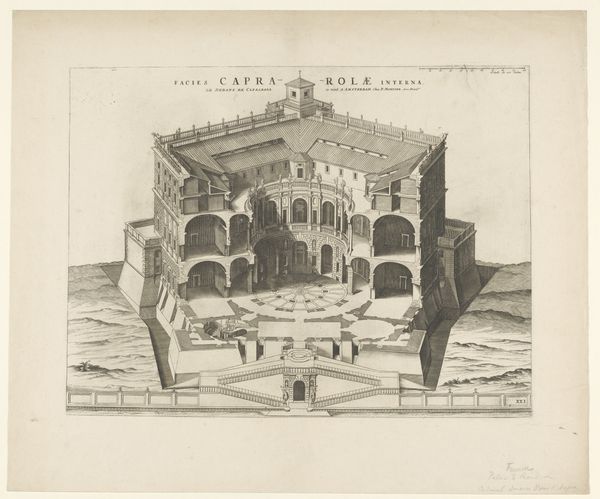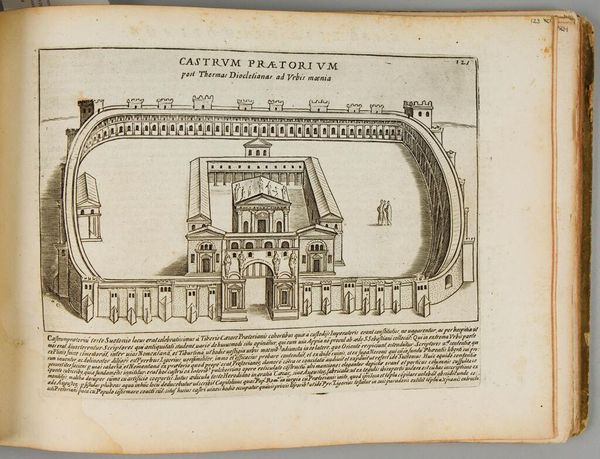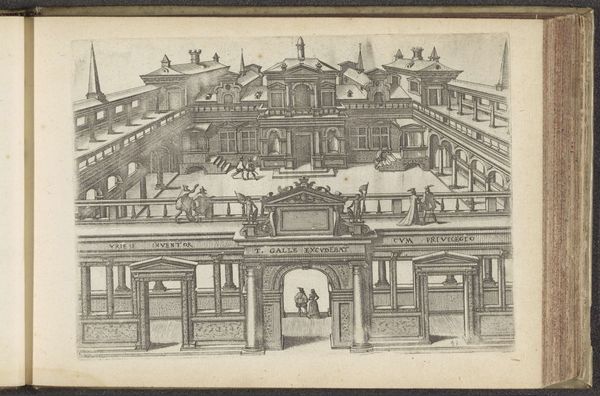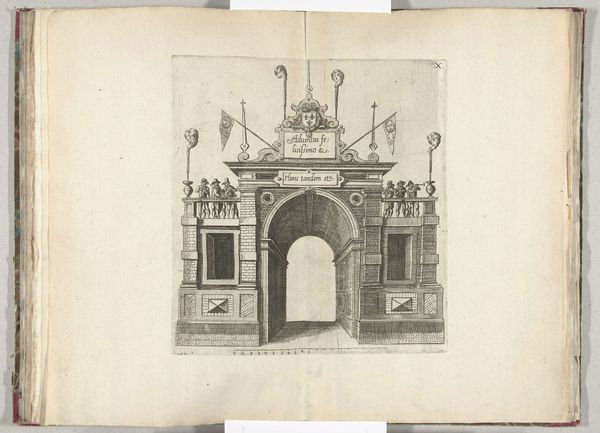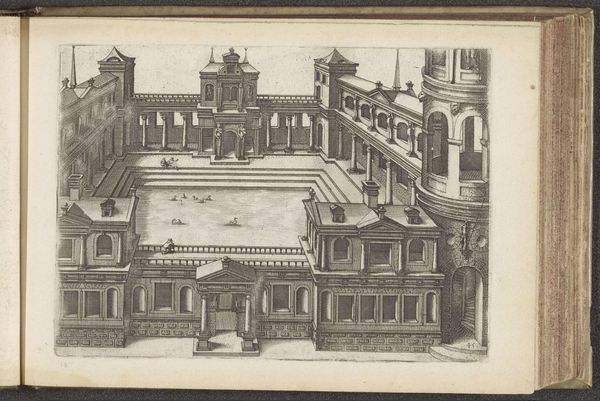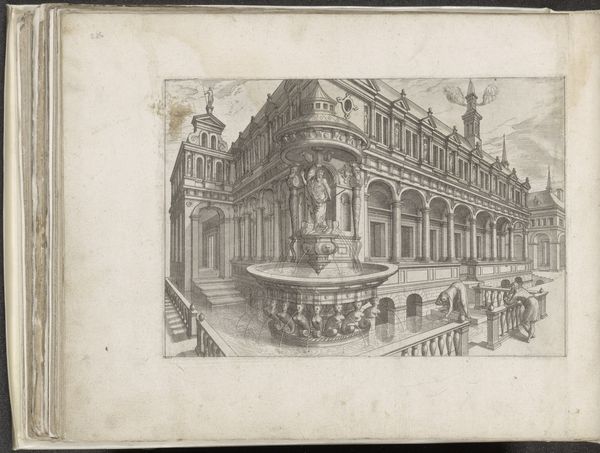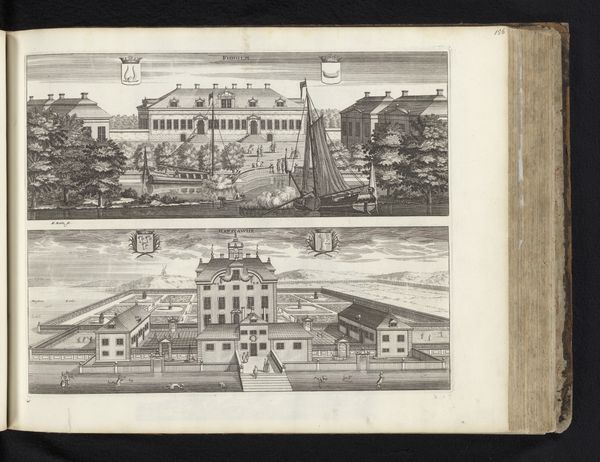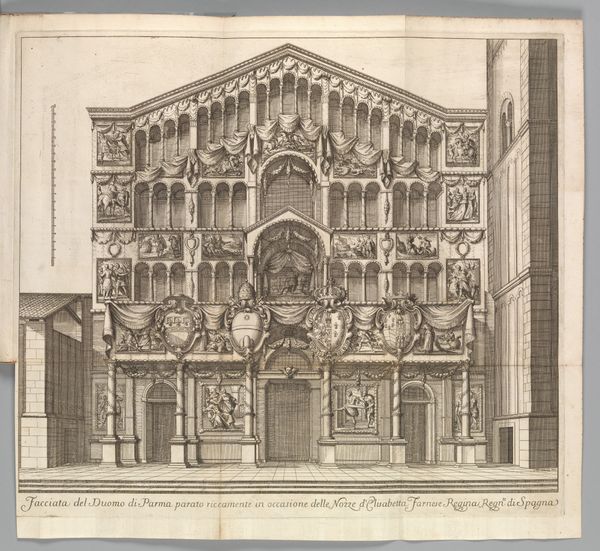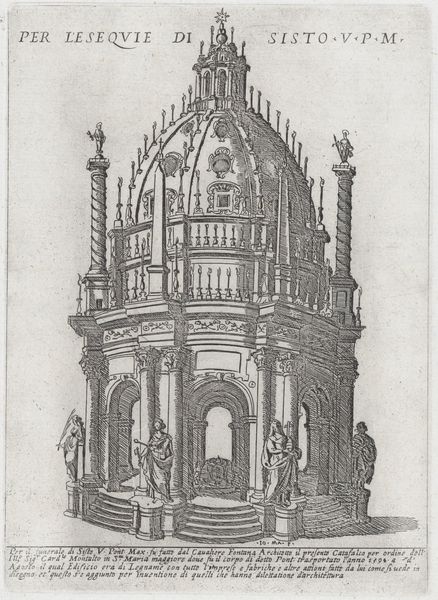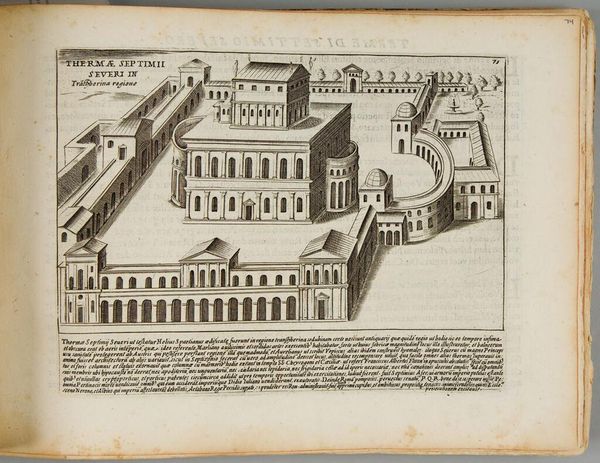
print, engraving, architecture
#
aged paper
#
mechanical pen drawing
# print
#
pen sketch
#
old engraving style
#
sketch book
#
personal sketchbook
#
pen-ink sketch
#
line
#
pen work
#
sketchbook drawing
#
italian-renaissance
#
sketchbook art
#
engraving
#
architecture
#
building
Dimensions: height 309 mm, width 425 mm
Copyright: Rijks Museum: Open Domain
Giovanni Battista Falda created this print of the courtyard of the Villa Farnese in Caprarola during the latter half of the 17th century. Falda’s representation offers not just a visual depiction, but also embodies the aristocratic ideals of the era. Consider the concept of "access" as you examine this cut-away view. While architecture often dictates the physical accessibility of space, prints like these shape cultural access by disseminating images of grandeur to a broader audience. Moreover, Falda was a prominent member of the male-dominated art world. His detailed rendering of the Villa, commissioned by the elite, contrasts sharply with the lives of ordinary people. Through his art, Falda reinforces a social hierarchy, inviting viewers to marvel at the opulence of the Farnese family. What does it mean to make visible, to reveal a usually private space? This print then is more than an architectural study; it is a cultural artifact which highlights the power dynamics inherent in artistic representation.
Comments
No comments
Be the first to comment and join the conversation on the ultimate creative platform.

